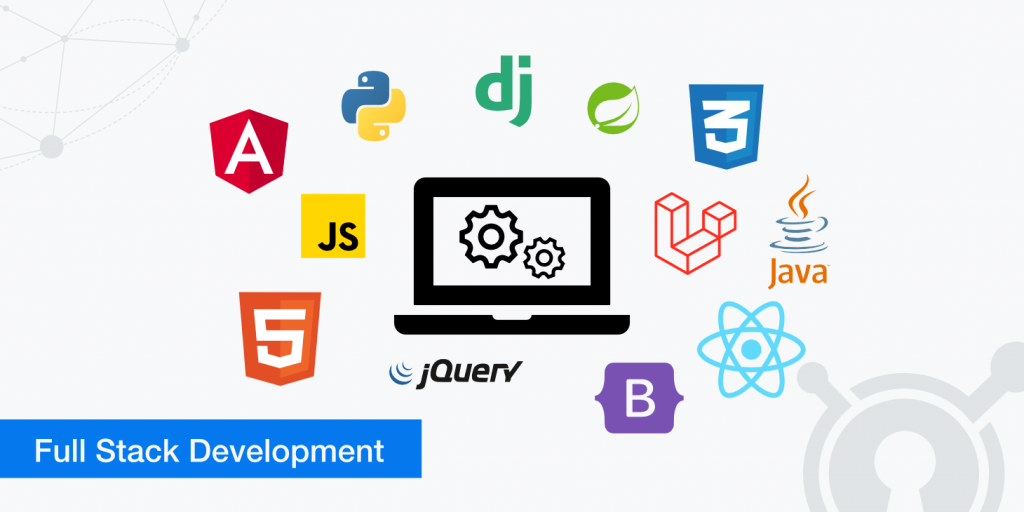Full Stack Development refers to the comprehensive skill set required to proficiently work on both the front-end and back-end aspects of web development. A full stack developer possesses a diverse range of technical abilities, enabling them to create and maintain entire web applications from start to finish.
In the rapidly evolving landscape of technology, Full Stack Development has emerged as a crucial skill set for modern developers. It encompasses both front-end and back-end development, enabling professionals to create robust, user-friendly web applications. In this guide, we will delve into the world of Full Stack Web Development, covering key concepts, technologies, and best practices.

I. Understanding Full Stack Development
Full Stack Development refers to the proficiency in both front-end and back-end technologies required to build a complete web application. A Full Stack Developer is capable of handling all aspects of a project, from designing user interfaces to managing databases and servers.
1. HTML, CSS, and JavaScript
– HTML (HyperText Markup Language) forms the structural foundation of web pages.
– CSS (Cascading Style Sheets) is used for styling and layout.
– JavaScript adds interactivity and functionality.
2. Front-End Frameworks and Libraries
– Popular frameworks like React, Angular, and Vue.js facilitate the development of dynamic, single-page applications.
3. Responsive Design and Cross-Browser Compatibility
– Ensuring that websites look and function seamlessly on various devices and browsers is crucial for a positive user experience.
III. Back-End Development
1. Server-Side Programming Languages
– Common languages include Python, Ruby, Java, and Node.js. Each has its own strengths and is suited for specific applications.
2. Databases
– Understanding databases (SQL, NoSQL) and their management is vital. MySQL, PostgreSQL, MongoDB are examples of widely used databases.
3. Server and Hosting
– Knowledge of server-side frameworks (Express, Django, Flask) and cloud platforms (AWS, Google Cloud, Azure) is essential.
IV. API Development
1. RESTful APIs
– Representational State Transfer is a standard for designing networked applications, providing a stateless communication model.
2. API Documentation
– Creating clear and comprehensive documentation ensures seamless integration with other services or applications.
V. Version Control and Collaboration
1. Git and GitHub
– Version control systems like Git enable collaborative development, tracking changes and managing code repositories.
2. Code Reviews and Collaboration Tools
– Platforms like GitHub, GitLab, and Bitbucket facilitate teamwork, code reviews, and issue tracking.
VI. Testing and Debugging
1. Unit Testing
– Writing automated tests to validate the functionality of individual components.
2. Debugging Tools
– Proficiency in debugging tools and techniques is crucial for identifying and rectifying errors.
VII. Security and Authentication
1. HTTPS and SSL Certificates
– Implementing secure connections to protect sensitive information.
2. Authentication and Authorization
– Understanding user authentication methods (OAuth, JWT) and implementing secure access controls.
VIII. Deployment and Continuous Integration
1. Continuous Integration/Continuous Deployment (CI/CD)
– Using tools like Jenkins, Travis CI, or GitLab CI/CD to automate testing and deployment processes.
2. Containerization and Orchestration
– Docker and Kubernetes are popular tools for packaging and managing applications in a scalable, efficient manner.
Conclusion
Full Stack Development is a dynamic field that demands continuous learning and adaptability. By mastering both front-end and back-end technologies, developers can create innovative, user-friendly web applications. Stay curious, practice regularly, and embrace new technologies to excel in this ever-evolving domain. Furthermore, the continuous evolution of technologies and methodologies in full-stack development emphasizes the importance of adaptability and ongoing learning. Successful full-stack developers are not only proficient in current technologies but also possess a mindset that embraces change and innovation. Ultimately, full-stack development fosters a well-rounded and versatile skill set, allowing developers to contribute significantly to the entire software development lifecycle. As the digital landscape continues to advance, the role of full-stack developers will remain crucial in building sophisticated, user-friendly, and high-performance applications.

